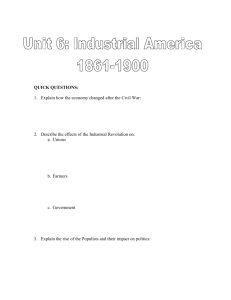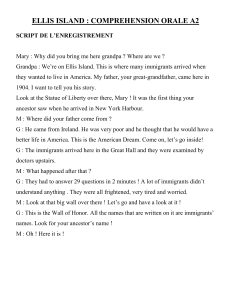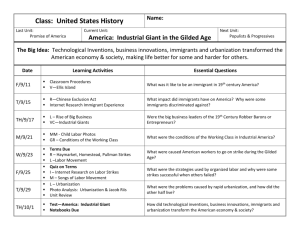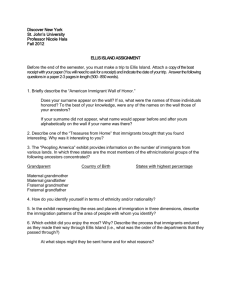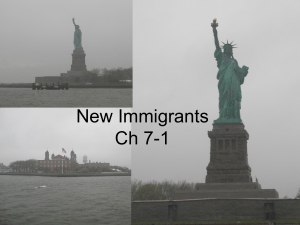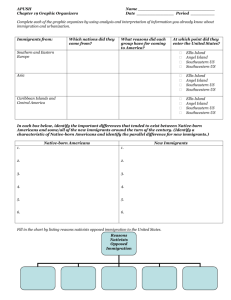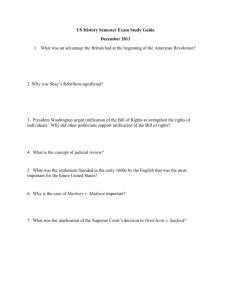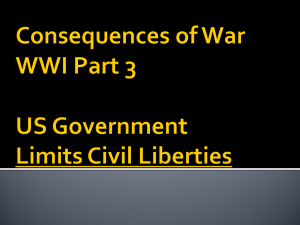American Society in the Industrial Age
advertisement
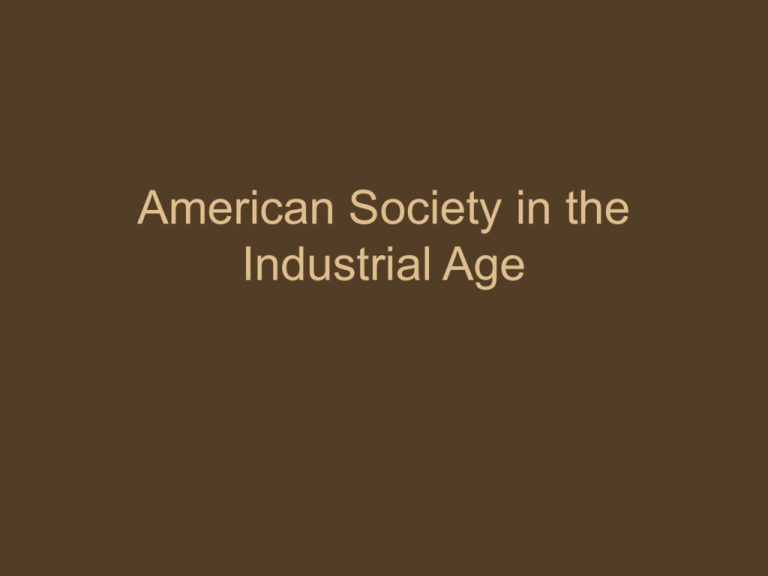
American Society in the Industrial Age African Americans Post Reconstruction • Army removed, Southern states govern to oppress AfricanAmericans – Hall v. DeCuir (1877) – Civil Rights Cases (1883) – Plessy v. Ferguson (1896) • “Separate but equal” – Booker T. Washington • Tuskegee Institute • Atlanta Compromise – Voting restrictions • Poll taxes, Literacy tests, Grandfather clauses Native Americans • Plains Indians and the Buffalo • Destruction of the Buffalo • Pacification of native Americans – Concentration Strategy – Reservations – Dawes Severalty Act (1887) • Helen Hunt Jackson – A Century of Dishonor (1881) • Wounded Knee (1890) – Ghost Dance “New” Immigration • Between 1866-1915 about 25 million immigrated to the US – Steam liner - passage safer, quicker and cheaper – Industrialization = opportunity – Farming market in Europe crashed • Mainly from Southern & Eastern Europe – Italy, Croatia, Poland, Russia – Catholic, Jews Once They Arrived • Ellis Island (1892) – Processed 12 million people in 60 years • Pass the test – Immigrants were inspected and interviewed • Criminals or mentally deficient people were generally the ones to go • Not many rejected – maybe one in fifty • Often names were butchered by over-worked customs officials and family names lost. Ellis Island “The Gateway to America” Angel Island • Located in San Francisco, CA – The Ellis Island of the West – Predominantly Chinese emigrants Growth of cities • Cities become overcrowded – Sanitation issues • sewers couldn’t keep up • Garbage couldn’t be picked up fast enough • City waterways became polluted from sewage – Tuberculosis became common – Housing • Overcrowded • No indoor sanitation, so people relieved themselves in outhouses in court yards – The smell was unbearable • Jacob Riis – Wrote How the Other Half Lives – Crime • Conditions led to violence • Street gangs formed from juvenile delinquents Ethnic Neighborhoods • Most immigrants created/moved into ethnic based communities upon arrival. • WHY? • Life in urban centers meant filth, poverty, and the rampant spreading of disease. • Early organized crime emerged • Ethnic neighborhoods abounded Nativist Reaction • Nativists did not appreciate the influx of immigrants – Cities are already too crowded – Feared low wage workers – Radicalism in the wake of the Haymarket bombing – Congress passed a literacy test in 1897 for immigrants upon arrival • vetoed by President Cleveland City Improvements • Once the connection was made between filth and disease efforts were made to clean things up • Streets were paved • Streetlights • Trolleys improved public transport in the late 1800s – These streetcars made it easier for the area of the city to increase. More folks could live in the suburbs • Suspension bridges increased traffic flows to the suburbs as well – Brooklyn Bridge (1883) – connected Manhattan to Brooklyn Labor Problems • • • • • • • Long Work Days Low pay Poor working conditions Industrial accidents Dissatisfaction with work – Monotony No benefits/sick leave/vacation Child Labor Working Women • Worked more and more outside the home • Textile mills employed a large % of women • Paid lower wages than men Upward Mobility • American Dream - believed society offered opportunity – White collar jobs offered this – Public Education system – Work Ethic • Rags to riches stories were rare • Horatio Alger Labor Movements • Labor begins to organize to combat industrialists – Boycotts – Picketing – Strikes • • • • • Great Railroad Strike (1877) Haymarket Square (1886) Homestead Steel Strike (1892) Pullman Strike (1894) Coal Strike (1902) Knights of Labor • • • • Led By: Terence Powderly Open to unskilled workers & artisans Open to minorities, women, immigrants What did they want? – – – – – – – – Eight-hour workday Workers’ cooperatives. Worker-owned factories. Abolition of child and prison labor. Increased circulation of greenbacks. Equal pay for men and women. Safety codes in the workplace. Prohibition of contract foreign labor. End of Knights of Labor • Haymarket Square • unions + violence + strikes + socialists + immigrants = anarchists • Americans turned against labor as a result American Federation of Labor (AFL) - 1886 • Led by: Samuel Gompers • Catered to the skilled worker. • Understood workers would remain working class – Promoted pride in being a worker • Pushed for 8 hour days • Worker’s safety laws • Maintained a national strike fund. • Mediated disputes between management and labor. Religious Answers to the Poor • Urban religious leaders – Asked what caused the problems with slums – Henry Ward Beecher – liquor and tobacco – Catholics aided poor but blamed their conditions on their sins • Did not recognizing the connection of living conditions and poverty Social Gospel • Social Gospel – Some preachers believed slum conditions caused sin and crimes – Focused on improving living conditions rather than saving souls – Believed people must have enough to eat and decent living conditions to behave properly – Believed in civil service reform, child labor laws, regulation of corporations, and taxing the wealthy Reformers • Settlement Houses – Located in poor districts – provided guidance and services to the poor – Workers were young idealists – Some men, but many women – fresh from college • Hull House – 1889 – Chicago – Founded by Jane Addams Reformers • Henry George: Progress and Poverty – Believed that those who create should reap the benefits – Disturbed by land owners profiting from workers – Believed that land should belong to all humanity. – Felt land owners should be heavily taxed – His book is critical of the mal distribution of wealth • Edward Bellamy: Looking Backward – Believed in the socialization of America – Book set in year 2000. America is socialist society – Popular in underground circles

